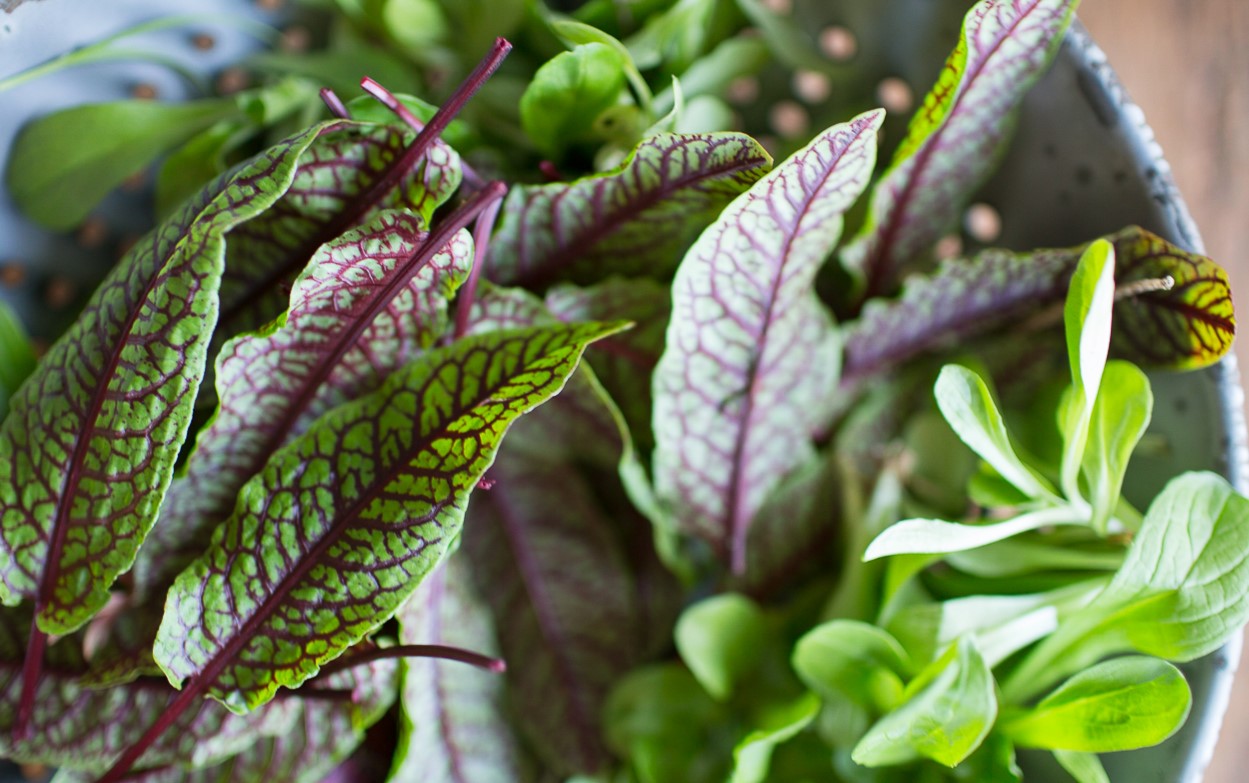
Red sorrel, also known as Rumex acetosella, is a fascinating plant with a rich history and many uses. Have you ever wondered what makes this plant so special? Red sorrel is not just a weed; it’s a powerhouse of nutrients and has been used in traditional medicine for centuries. This plant thrives in various environments, making it a resilient and versatile addition to gardens. Its tart, lemony flavor adds a unique twist to salads and soups. But there's more to red sorrel than meets the eye. From its vibrant red stems to its heart-shaped leaves, this plant is a visual delight. Ready to learn more? Let's dive into 20 intriguing facts about red sorrel that will leave you amazed!
Key Takeaways:
- Red Sorrel, also known as Rumex acetosella, is a vibrant herb with a tart, lemony flavor. It's rich in vitamins, low in calories, and can be used in salads, soups, and even smoothies. Plus, it has medicinal properties and can help reduce water retention.
- Red Sorrel, a hardy plant native to Europe and Asia, thrives in acidic soils and can survive in temperatures as low as -30°F (-34°C). Its distinct sour taste comes from oxalic acid, and it spreads quickly through rhizomes. It's a versatile ingredient in cooking, adding a zesty flavor to salads, soups, and sauces.
What is Red Sorrel?
Red Sorrel, also known as Rumex acetosella, is a perennial herb found in many parts of the world. This plant is known for its vibrant red stems and tart, lemony flavor. Let's dive into some fascinating facts about this unique plant.
-
Red Sorrel is native to Europe and Asia. It has spread to North America and other parts of the world, often considered a weed.
-
The plant belongs to the buckwheat family. This family includes other well-known plants like rhubarb and dock.
-
Red Sorrel has a distinct sour taste. This flavor comes from oxalic acid, which is also found in spinach and rhubarb.
-
It is often used in salads and soups. The leaves add a tangy flavor that can enhance many dishes.
-
Red Sorrel has medicinal properties. Traditionally, it has been used to treat inflammation, digestive issues, and scurvy.
Growing Conditions for Red Sorrel
Understanding the growing conditions for Red Sorrel can help you cultivate this plant in your garden. Here are some key facts about its growth requirements.
-
Red Sorrel thrives in acidic soils. It prefers a pH range of 4.5 to 6.5.
-
The plant can grow in poor soil conditions. It is often found in sandy or gravelly soils where other plants struggle.
-
Red Sorrel prefers full sun to partial shade. It can tolerate some shade but grows best with plenty of sunlight.
-
It is a hardy plant. Red Sorrel can survive in temperatures as low as -30°F (-34°C).
-
The plant spreads through rhizomes. These underground stems allow it to colonize large areas quickly.
Nutritional Benefits of Red Sorrel
Red Sorrel is not just a flavorful addition to your meals; it also offers several nutritional benefits. Here are some facts about its nutritional profile.
-
Red Sorrel is rich in vitamins. It contains high levels of vitamins A, C, and K.
-
The plant is a good source of minerals. It provides calcium, magnesium, potassium, and iron.
-
Red Sorrel is low in calories. This makes it an excellent choice for those watching their calorie intake.
-
It contains antioxidants. These compounds help protect your cells from damage caused by free radicals.
-
Red Sorrel has diuretic properties. It can help reduce water retention and bloating.
Uses of Red Sorrel in Cooking
Red Sorrel's unique flavor makes it a versatile ingredient in the kitchen. Here are some ways you can use it in your cooking.
-
Add it to salads. The tart leaves can brighten up any salad with their zesty flavor.
-
Use it in soups and stews. Red Sorrel adds a tangy note that complements rich, savory dishes.
-
Make a sorrel sauce. This classic French sauce pairs well with fish and poultry.
-
Blend it into smoothies. The leaves add a refreshing, lemony taste to your favorite smoothie recipes.
-
Use it as a garnish. The vibrant red stems and green leaves can add a pop of color to any dish.
Red Sorrel: A Plant Worth Knowing
Red sorrel isn't just a weed. It's a versatile plant with a rich history and many uses. From its medicinal properties to its role in cuisine, red sorrel has proven its worth. Its tangy flavor adds a unique twist to dishes, while its health benefits make it a valuable addition to any diet. Whether you're a gardener, a chef, or someone interested in natural remedies, red sorrel offers something for everyone. Its vibrant red stems and heart-shaped leaves also make it a visually appealing plant for gardens. So next time you see red sorrel, remember it's more than just a common weed. It's a plant with a lot to offer. Embrace its potential and explore the many ways it can enhance your life.
Frequently Asked Questions
Was this page helpful?
Our commitment to delivering trustworthy and engaging content is at the heart of what we do. Each fact on our site is contributed by real users like you, bringing a wealth of diverse insights and information. To ensure the highest standards of accuracy and reliability, our dedicated editors meticulously review each submission. This process guarantees that the facts we share are not only fascinating but also credible. Trust in our commitment to quality and authenticity as you explore and learn with us.


